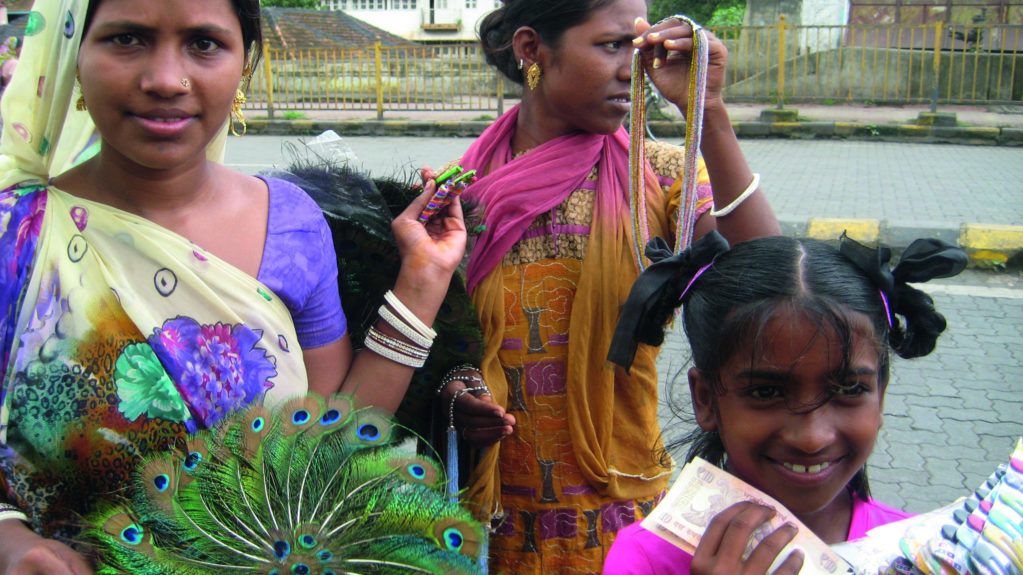As I left the airport I was greeted by temperatures of over 35 degrees, it was humid and uncomfortable but within minutes I was seated in an air-conditioned car. My itinerary said that Agra was 205 kilometers away, so I figured it would be a two-hour drive. I didn’t realize the speed limit was 40 kms an hour—the journey took five painful hours. Yes at that speed, I still felt as though the driver was speeding—he kept swerving to avoid the crater size potholes. Driving in India is scary—there’s no adherence to the road markings; overtaking on a solid line is common practice; drivers hoot incessantly and cut lanes. Surprisingly, no one gets upset, no one swears or raises their hands and I arrived safely.
Agra—home of the famous Taj Mahal—is a bustling town, which looks like it had been derelict for a long time and suddenly people rushed back to rebuild it. The streets are filled with rows of abandoned housing complexes, small shanty shops and tangled power lines, which are connected mostly illegally. Cattle paraded the street without a care in the world—these sacred animals are kept like pets; children play alongside them and traffic stalls until they pass. Beef products are not allowed and if you see a steak on the menu, it’s probably buffalo meat. The McDonalds menu consists of chicken, fish and paneer burgers, with the McMaharaj being the equivalent of a Big Mac.

Another big attraction, without which a trip to India would be incomplete, is the Taj Mahal. The white marble mausoleum was completed in 1649 in honor of emperor Shah Jahan’s favorite wife.
I drove back to New Delhi—the capital of India and home to more than 20 million people. It’s a more contemporary city, which houses the Indian parliament. Beautiful parks and gardens broke the sights of the bustling traffic, which seemed to go on for the entire day.
Loading...
The food was delicious, we ate like kings, but only in restaurants. The street food looked and smelt divine, with Tikka chicken and roasted paneer on most corners, but horrible stories of ‘Delhi belly’ helped me resist.
From the capital, I travelled to Chennai, formerly known as Madras, where I had more of a culture shock as motorbikes and gas-guzzling tuk-tuks filled the streets. The streets of the densely populated city are busy until late, markets offer great bargains on fabrics and gold jewelry and food stalls, on most corners, fill the pavements with brightly colored, sweet delights.
From city to countryside, I decided to drop the pace a notch and travel to Kerala, further south. I boarded a luxury houseboat, which floated along the quiet backwaters of the Alleppey River. The highlight was stopping on the banks to buy fresh fish and prawns. I had never seen such big prawns before and never had my taste buds enjoyed such flavor. The houseboat cook skillfully prepared the seafood with his special spices. Eating on a houseboat, listening to the small ripples in the water and the crickets near the banks was another highlight.
The next day I caught a flight to Goa—India’s smallest state but a very popular tourist spot. Small windy streets, forest-like vegetation and the white sandy beaches are big attractions for foreigners and Indians alike. The region is known for its large spice plantations and cashew nuts. Gambling is popular here, unlike in the rest of India.
Mumbai, the home of Bollywood, is more liberal than the other Indian states—the people speak English well and are less traditional in their dress. Fancy five star hotels line the beach front. It’s known as a commercial hub and the economic giant of India as it is home to two Indian stock exchanges. Transport services are excellent: busses run frequently; bright yellow and black cabs fill the more affluent parts of town; tuk-tuks do short runs around the market areas and three million people travel through the famous Victoria Train Station every day, which is also a UNESCO World Heritage Site.
A sharp contrast though are the huge slums deeper in the city—children ran in the streets trying to sell scarves, beautifully woven materials and miniature elephants, when they should have been at school. We visited a massive open-air laundry where 2,000 men—who have taken on laundry contracts from nearby hotels—were washing sheets and towels. The government provides them with clean water and industrial dryers. Water is not safe to drink in India, even Indians drink bottled water.

While I was there, it was Independence Day, 65 years of independence and yet India looks like it’s battling a dilemma of moving into a new age with the rest of the world or staying with its deeply entrenched traditional and religious existence. India is not easy in many respects—it’s hot and humid, busy and noisy, but wherever I traveled I felt safe and the people were humble. So while India may not be the ideal destination to kick back and relax it is a destination that will offer you a truly unique experience. The people of India prefer quality of life with little focus on materialism. There’s a real respect for tradition and culture. The food is fantastic and the hospitality is superb. India though deserves more than just two weeks.
Loading...
